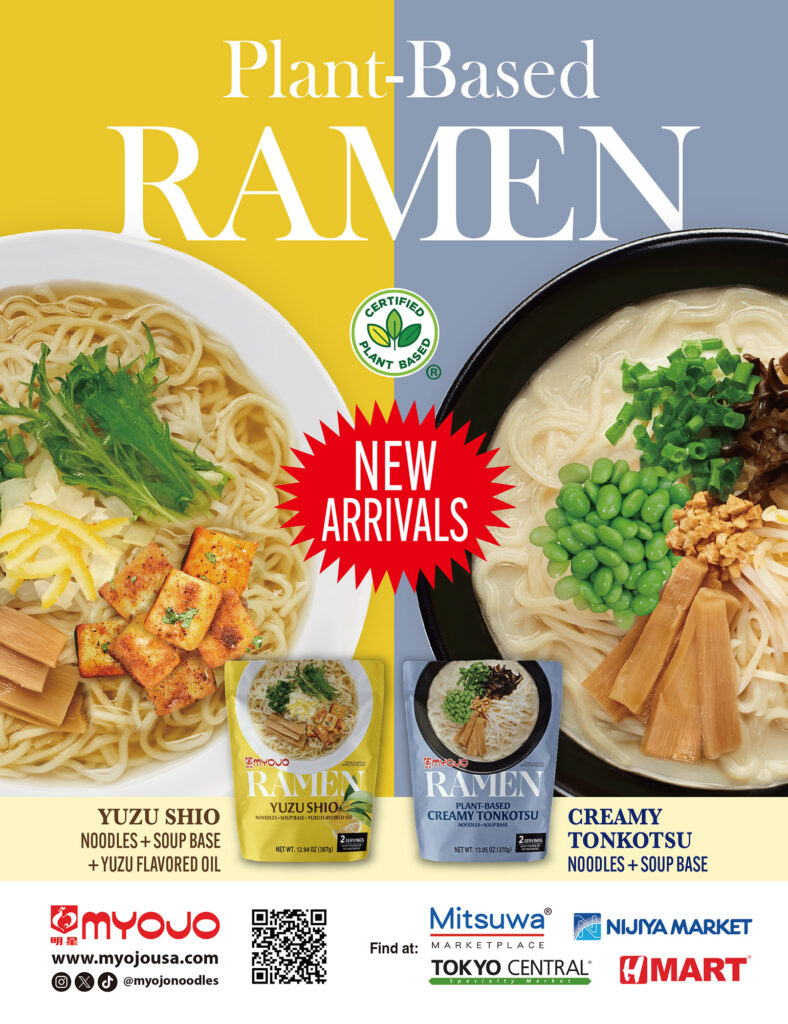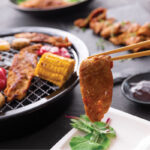
Japan’s Frozen & Instant Food Revolution
Japan has long been a pioneer in developing high-quality frozen and instant foods, continuously innovating to enhance convenience, taste, and nutrition. In recent years, these products have gained significant recognition in the U.S., appealing to health-conscious consumers and those seeking quick and easy meal solutions. This article explores how Japan became a global leader in frozen and instant foods, highlighting their evolution and the latest trends shaping the industry.
The Evolution of Japan’s Frozen Foods
The history of frozen foods in Japan dates back to 1920, when the country’s first freezing facility was established in Mori, Hokkaido, enabling large-scale frozen fish storage. By the 1950s, frozen foods became widely available for household use, and their popularity surged during the 1964 Tokyo Olympics, when they were used to prepare meals for athletes in the Olympic Village. This event introduced the convenience and reliability of frozen foods to a broader audience.
Today, rapid freezing technology has advanced significantly, allowing food to retain its original flavor and texture without compromising quality. Japanese frozen foods are now widely used not only in homes but also in restaurants, school cafeterias, and convenience stores, demonstrating their widespread acceptance and versatility.

Japan’s Innovations in Instant Foods
Japan has also been a driving force in revolutionizing instant foods. In 1968, the world’s first commercially available retort curry—a shelf-stable, ready-to-eat meal—was introduced, offering consumers an easy way to enjoy authentic flavors with minimal preparation. Just a few years later, in 1971, instant cup noodles debuted, forever changing the way people consume quick meals. By simply adding hot water, consumers could enjoy a satisfying dish within minutes, making it a go-to option for busy individuals.
These innovations have set the stage for continued advancements in the instant food industry, with modern products featuring gourmet flavors, premium ingredients, and healthier options catering to diverse dietary preferences.
The Growing Popularity of Japanese Frozen & Instant Foods in the U.S.
Japanese frozen and instant foods are gaining widespread popularity in the U.S. due to their high quality and diverse variety. Favorites like gyoza, ramen, and onigiri provide consumers with an easy way to enjoy authentic Japanese flavors at home.
Major grocery chains across the U.S. now stock an expanding selection of Japanese frozen and instant foods, making them more accessible than ever. Their affordability, convenience, and exceptional taste have made them popular not only among the Japanese community but also among American consumers looking for high-quality, easy-to-prepare meals.
Latest Trends and the Future of Japanese Frozen & Instant Foods
As consumer preferences shift toward healthier and more sustainable options, Japanese frozen and instant food manufacturers are adapting to meet these demands. Recent trends include low-carb, high-protein meals and plant-based alternatives, providing more choices for health-conscious consumers.
Additionally, more products now prioritize natural ingredients, minimizing preservatives and artificial additives while maintaining high standards of quality and safety. This shift reflects a growing global demand for healthier and more sustainable food choices.
With technological advancements and innovative product development, Japanese frozen and instant foods are expected to see continued growth in the U.S. market.
Japanese frozen and instant foods are no longer just about convenience—they bring quality, innovation, and authentic flavors to everyday meals. With new technologies and creative recipes, they continue to evolve, offering exciting possibilities for consumers worldwide.

Have you tried Japanese frozen and instant foods? Discover a whole new way to enjoy them today!
A New Way to Enjoy Frozen & Instant Foods
Frozen and instant foods have evolved beyond being just quick-fix meals—they are now an essential part of modern dining. With a focus on health, sustainability, and innovation, these products provide more than just convenience.
There was once a perception that frozen and instant foods were easy but not necessarily healthy. However, today’s products include low-calorie, high-protein options and preservative-free selections, making them an excellent addition to a well-balanced diet.
Simple Ways to Elevate Your Meals
✔ Use frozen meals with vegetables
Incorporate frozen soups or pre-cut vegetables to create a balanced meal effortlessly.
✔ Enhance instant foods with fresh ingredients\
Add fresh vegetables or a boiled egg to instant ramen for a nutrition boost.
Smart Stocking for Busy Days
Having frozen and instant foods on hand can make meal planning easier and reduce the stress of last-minute cooking. They’re not just for emergencies—they can be the foundation of creative, home-cooked meals.
✔ Stock frozen foods as ingredients, not just meals
Frozen udon noodles, seafood, or pre-cut vegetables can help you prepare a healthy meal in minutes.
✔ Use instant foods as flavor boosters
Instant soup can double as a pasta sauce, and instant curry can enhance the flavor of a meat dish.
Tomato Yuzu Ramen with Myojo Yuzu Shio Ramen
Here’s a delicious recipe from a representative at Myojo USA, a popular brand known for its latest plant-based ramen!
The tangy sweetness of tomatoes pairs beautifully with the light, aromatic yuzu oil, creating a bright, comforting bowl full of depth. Packed with flavor, protein, and totally vegan-friendly—this is a must-try for your next cozy meal!


① In a medium pot, bring 4 cups of water to a boil. Add defrosted noodles and cook for 1 minute 15 seconds, stirring occasionally.
(If frozen, add 1 extra minute to the cooking time.)

② In a separate small pot, bring 1 ¼ cups of water to a boil and add chopped tomatoes. Let them cook until softened.

③ Open the soup base packet and pour it into a serving bowl. Add the 1 ¼ cups of boiling water from the small pot and mix well.

④ Drain the cooked noodles and add them to the soup. Top with boiled tomatoes, daikon sprouts, and black pepper. Drizzle with yuzu oil and enjoy!





